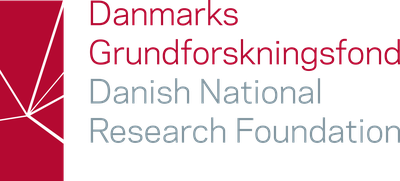The Center of Gravity
Welcome to the Center of Gravity (CoG), where we strive to understand the gravitational interaction and the cosmos. The CoG is a center for new ideas about the foundations of physics.
We bring together cutting edge research in observations of black holes and in the formal theory of relativistic and quantum aspects of gravity, completing the visions of Bohr and Einstein for the gravitational interaction.

Our research endeavor spans from data analysis to theoretical disciplines within astrophysics and high-energy physics, and we aim to drive gravitational-wave physics to an exciting future.
The Center takes advantage of the remarkable talent at the Niels Bohr Institute, to promote synergies linking fundamental physics with observations.
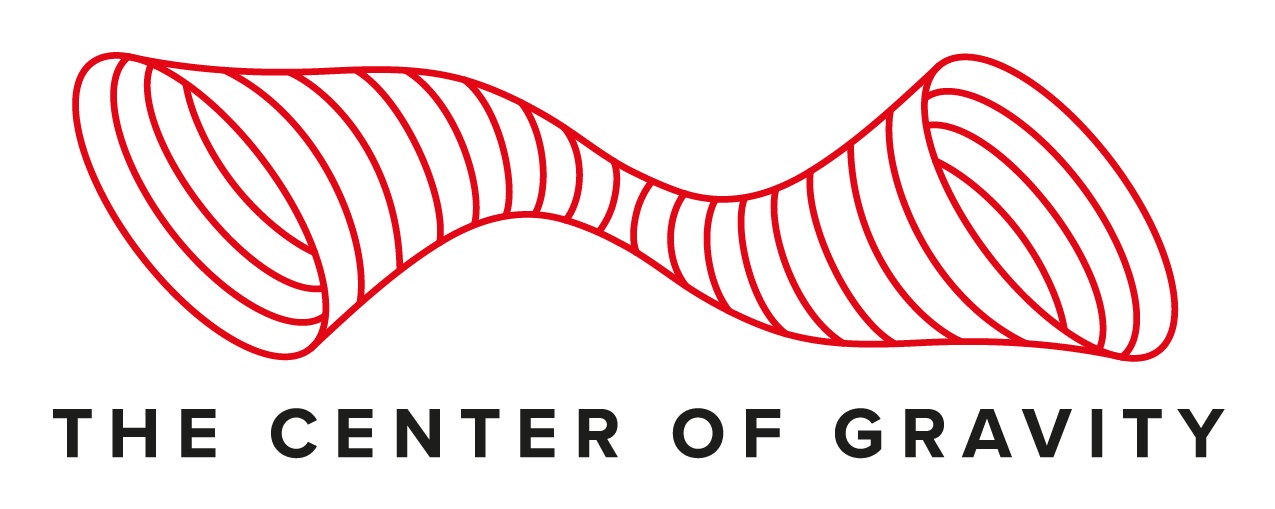
We have our physical home in the beautiful and legendary building at Blegdamsvej 17, established by Niels Bohr. This is the place where quantum theory was born and where many new exciting developments in gravity are now taking place.
Today, the Niels Bohr Institute carries an important legacy in physics and is one of the leading institutes in theoretical and experimental physics. Located in Copenhagen, a vibrant and lovely city, the Institute is very easy to reach.
- The Niels Bohr Institute is renowned in Denmark and is a beloved institution in the community at large (it's not uncommon to see families stopping outside the institute to take pictures).
- The Institute is famous for the many scientific breakthroughs that took place within its premises.
- The theoretical advances regarding the structure of the atom and the explanation of the periodic table, together with breakthroughs in nuclear physics and pioneering work in string theory and quantum gravity, all took place here.
The famous Copenhagen interpretation of Quantum Mechanics was developed at NBI by Bohr and many other collaborators. Fermi's golden rule was actually developed by Paul Dirac while at NBI.
At the Center of Gravity, we hope to carry on the pioneering spirit that has defined our predecessors at the Niels Bohr Institute through trailblazing and fundamental research. This would not be possible without our funding partner, namely the Danish National Research Foundation, which provides primary funding to the CoG as a Center of Excellence, running for up to 10 years divided between two granting periods that run for 6 and 4 years respectively.
The excellency of our research is also translated in other funding support for our members, such as Villum Investigator Grants, Young Villum Investigator, European Research Council Grants, Marie Curie postdoctoral grants, etc. To learn more about our work, explore our webpage.
CoG Advisory Board
Vitor Cardoso (NBI)
Katy Clough (Queen Mary University London)
Poul Henrik Damgaard (Chair, NBI)
Reinhard Genzel (Garching)
Scott Hughes (M.I.T.)
Aaron Zimmerman (University Texas Austin)
Board members
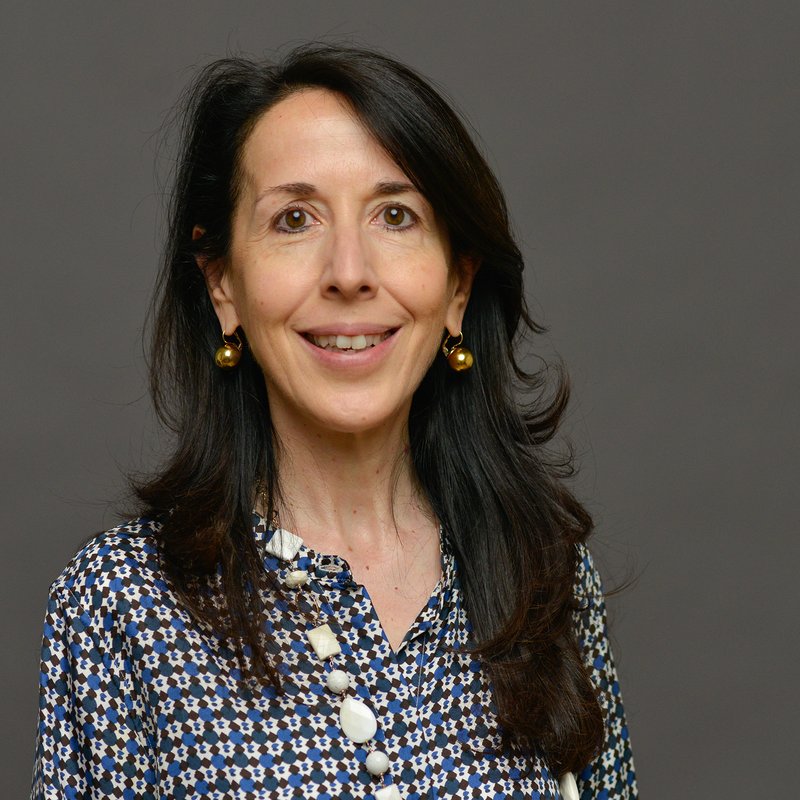 Alessandra Buonanno
Alessandra Buonanno
Professor
email
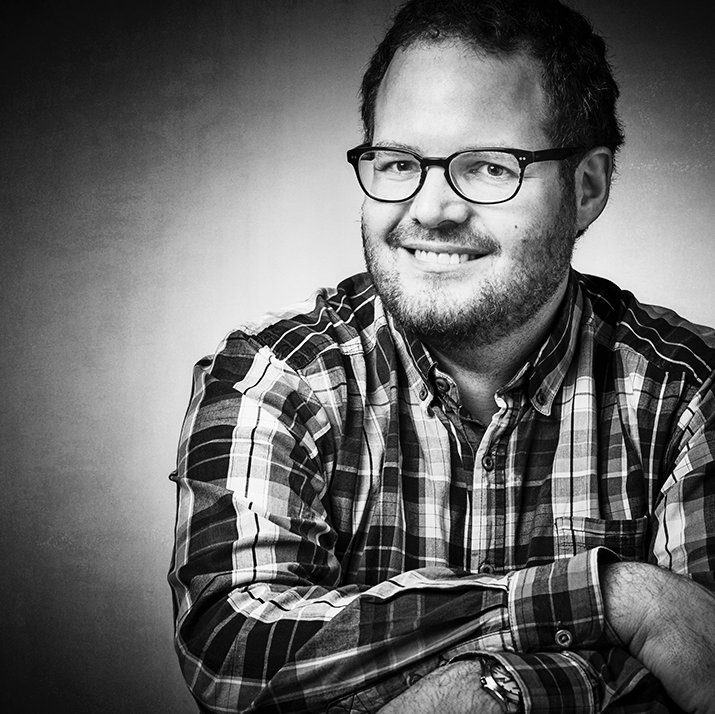 Emil Bjerrum-Bohr
Emil Bjerrum-Bohr
Associate Professor
email
Emil's research focuses on perturbative expansions of on-shell scattering amplitudes in gravity—an essential topic for studying the inspiral of black hole binaries using quantum field theory.
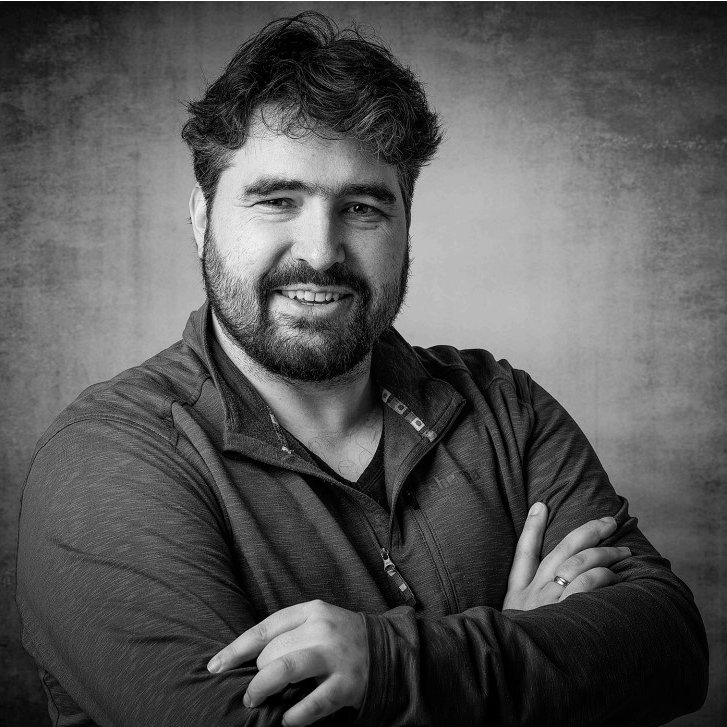 Maarten van de Meent
Maarten van de Meent
Associate Professor
email
Maarten's interested in the relativistic 2-body problem describing the inspiral and merger of black hole binaries. He is an expert on the gravitational self-force formalism.
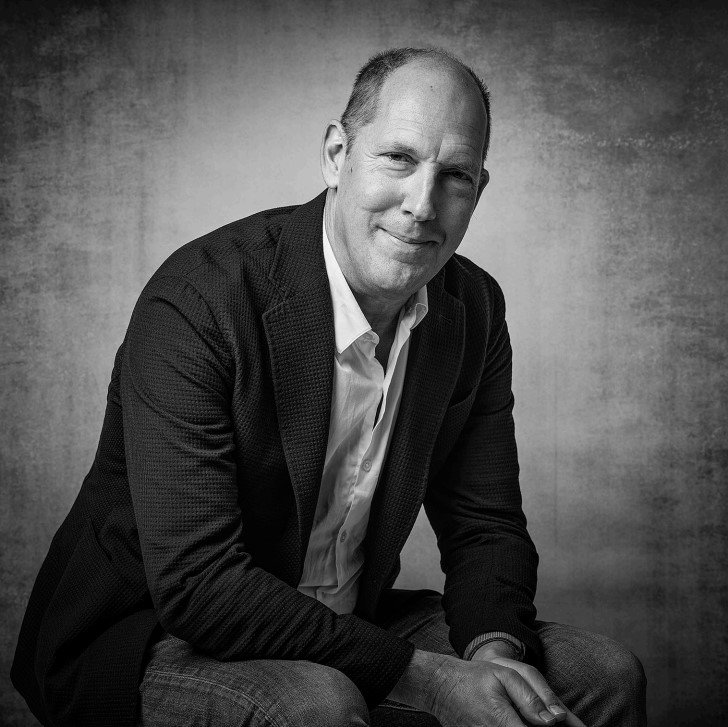 Niels Obers
Niels Obers
Professor
email
Niels' research centers around understanding the quantum nature of gravity and fundamental properties of black holes using approaches originating from string theory and holography.
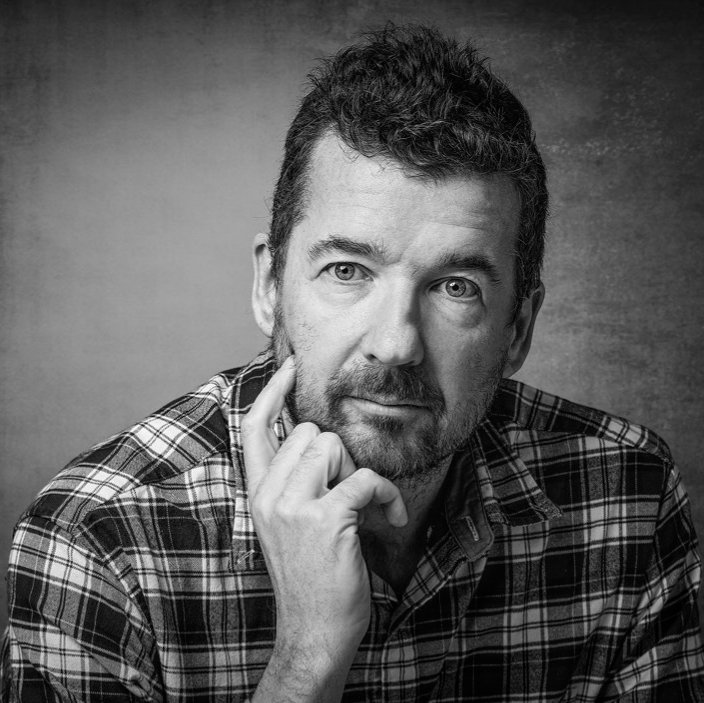 Troels Harmark
Troels Harmark
Associate Professor
email
Troels' research is on fundamentals of gravity, exploring holographic models for quantum gravity and new analytical techniques for strong gravity phenomena.
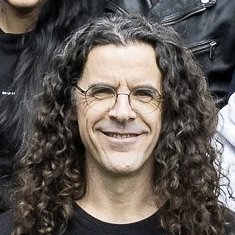 Vítor Cardoso
Vítor Cardoso
Center Director/Professor
email
Vitor's research uses black holes as engines of discovery, using them to understand the dark content of our universe, but also to test the very tenets of General Relativity.
Group leaders
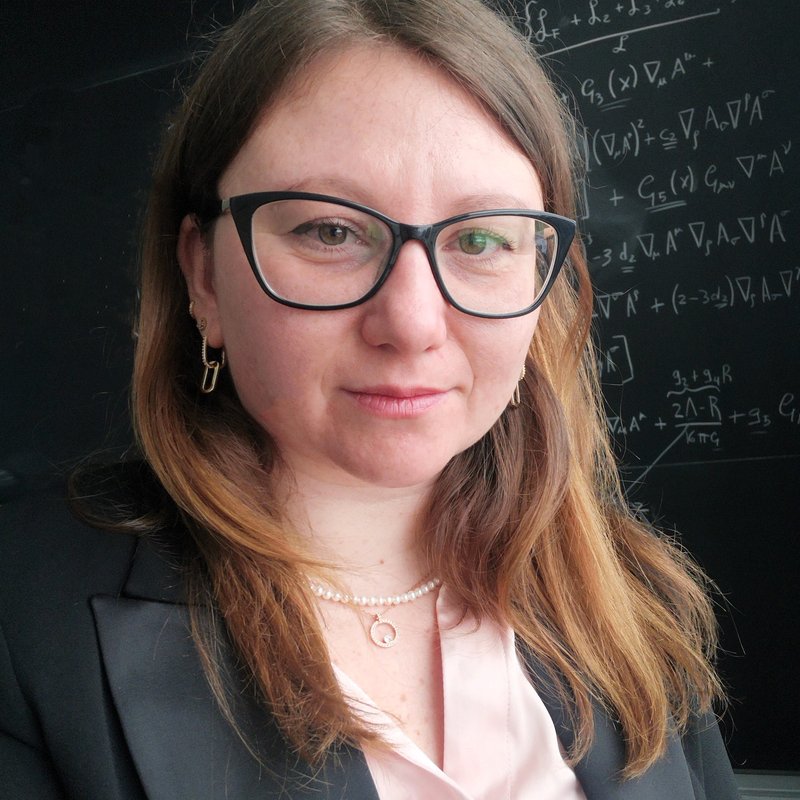 Alessia Benedetta Platania
Alessia Benedetta Platania
Associate Professor
email
Alessia studies quantum gravity through the lens of effective field theory, testing and comparing different theories—e.g., asymptotic safety and string theory—and their infrared predictions.
 Emil Bjerrum-Bohr
Emil Bjerrum-Bohr
Associate Professor
email
Emil's research focuses on perturbative expansions of on-shell scattering amplitudes in gravity—an essential topic for studying the inspiral of black hole binaries using quantum field theory.
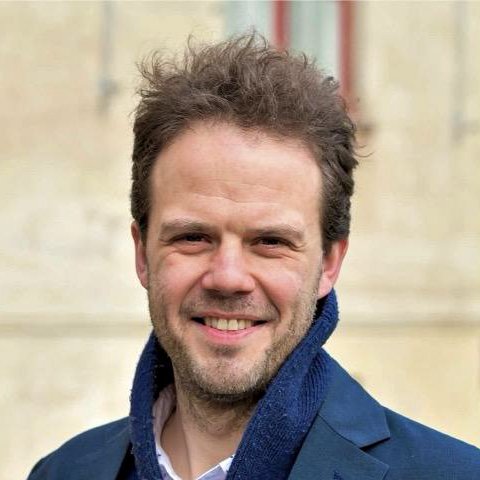 Johan Samsing
Johan Samsing
Assistant Professor
email
Johan explores how to use observations of gravitational waves to probe the astrophysical origin and host environment of binary black hole mergers throughout our Universe.
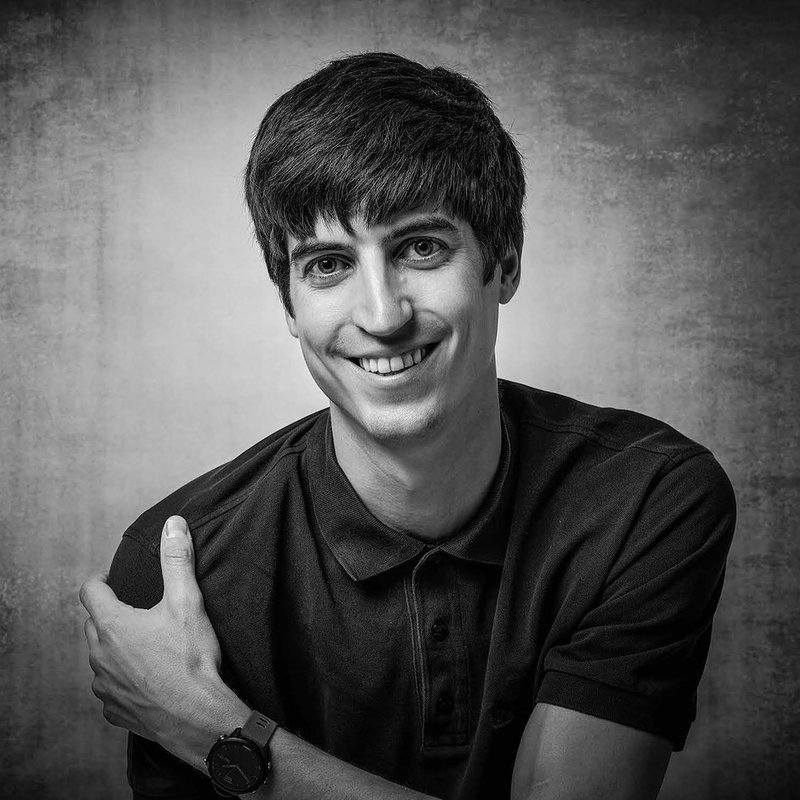 Jose Ezquiaga
Jose Ezquiaga
Associate Professor
email
Jose's research lies at the intersection of fundamental physics, cosmology and astrophysics and aims at probing gravity and unveiling the nature of dark energy and dark matter.
 Maarten van de Meent
Maarten van de Meent
Associate Professor
email
Maarten's interested in the relativistic 2-body problem describing the inspiral and merger of black hole binaries. He is an expert on the gravitational self-force formalism.
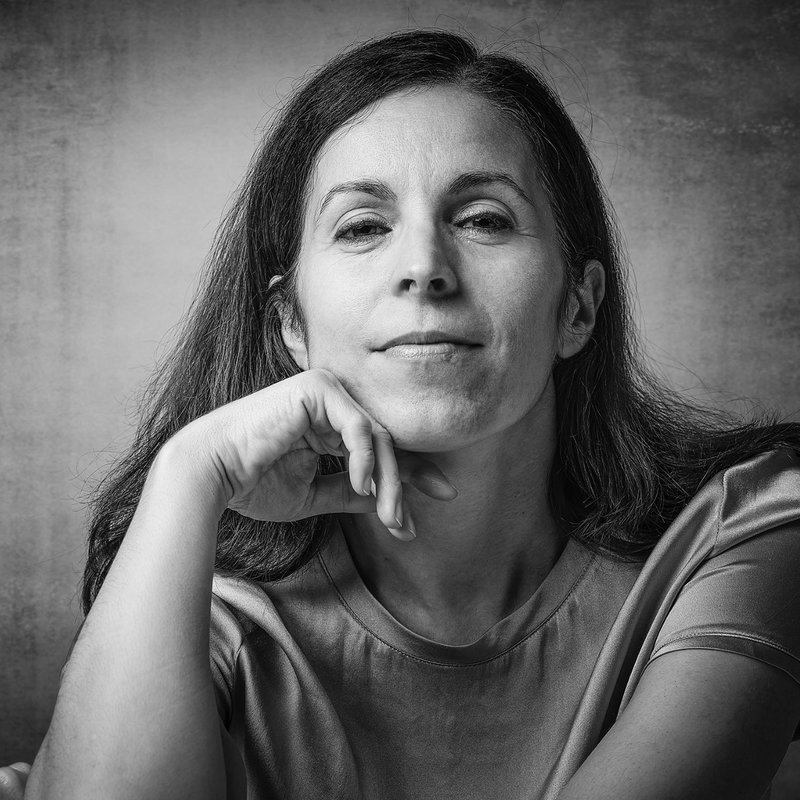 Marta Orselli
Marta Orselli
Associate Professor
email
Marta studies black hole systems in the regime of strong gravity to discover how their dynamics and the emitted gravitational wave signal is influenced by extreme gravitational environments.
 Niels Obers
Niels Obers
Professor
email
Niels' research centers around understanding the quantum nature of gravity and fundamental properties of black holes using approaches originating from string theory and holography.
 Troels Harmark
Troels Harmark
Associate Professor
email
Troels' research is on fundamentals of gravity, exploring holographic models for quantum gravity and new analytical techniques for strong gravity phenomena.
 Vítor Cardoso
Vítor Cardoso
Center Director/Professor
email
Vitor's research uses black holes as engines of discovery, using them to understand the dark content of our universe, but also to test the very tenets of General Relativity.
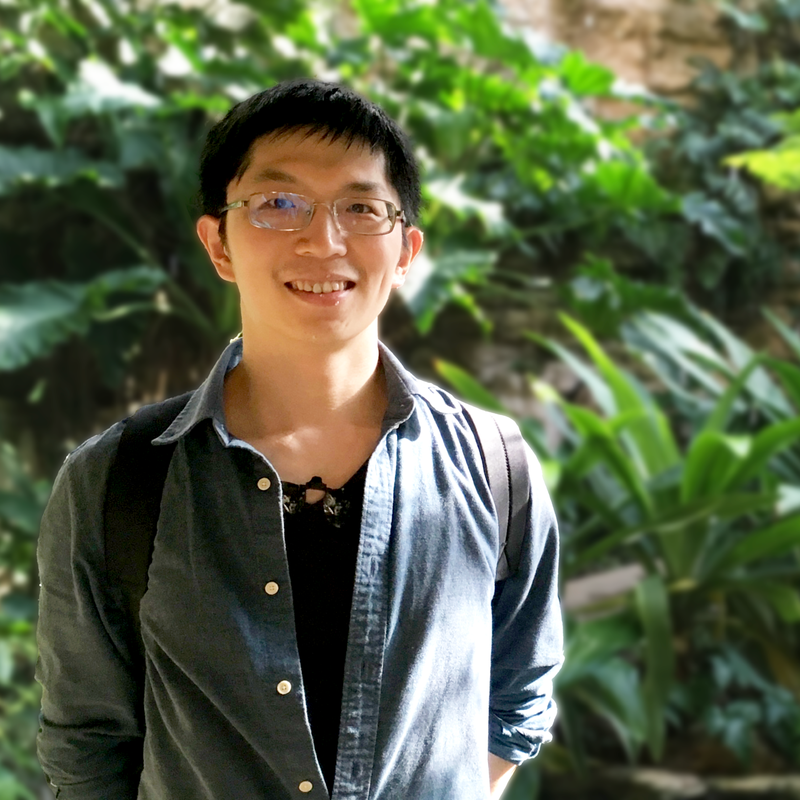 Ziqi Yan
Ziqi Yan
Associate Professor
email
Ziqi's current research focuses on how gravity emerges from quantum systems in string theory and M-theory, and its implications for cosmology.
The two-body problem in General Relativity
The two-body problem in General Relativity investigates the gravitational interaction between two massive objects, such as stars or black holes.
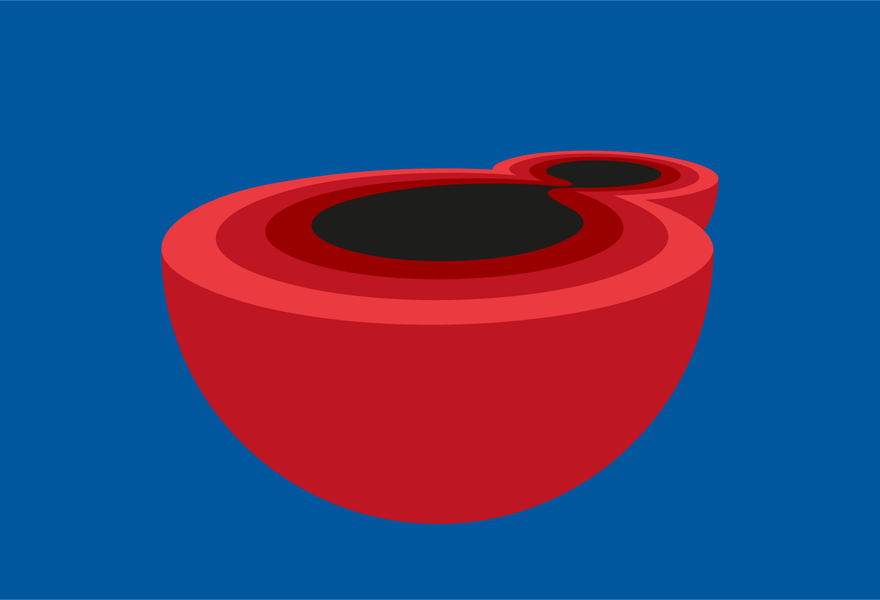
At CoG, we aim to understand the complexities due to the curvature of spacetime governed by the Einstein field equations that lead to phenomena like gravitational waves and orbital precession.
Examples of solutions to the problem include the Schwarzschild and Kerr metrics, which describe the spacetime around spherical and rotating bodies, respectively. Studying the two-body problem in General Relativity enhances our comprehension of interactions in the Universe by providing insight into the fundamental nature of gravity and spacetime.
A recent approach to the problem, studied at the CoG, is leveraging recent breakthroughs in quantum field theory that allow an equivalent but alternative perturbative description of gravitational two-body dynamics.
High-energy physics and quantum approaches to strong-field gravity
Via the particle/wave duality, a profound insight of quantum mechanics, the detection of gravitational waves has reinvigorated the belief that there is a quantum constituent of space-time and gravity out of which the macroscopic description emerges.
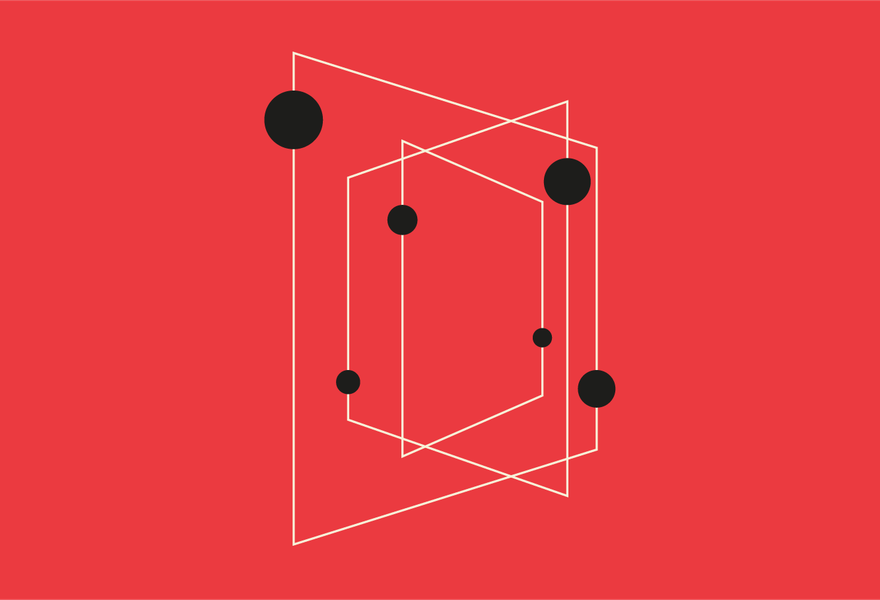
Members of CoG are leading efforts in unravelling some of the most fundamental questions regarding time, space and gravity and their interplay with quantum physics:
What is a black hole made of? How does spacetime manifest itself at the quantum level? Does this involve a lower-dimensional holographic realization? How does gravity behave in the strong coupling regime?
Will we have access to smoking gun detections of quantum gravity from astrophysical observations to state-of-the-art table-top experiments? What are the consequences for black hole spectroscopy and gravitational wave physics?
Black hole spectroscopy
Black holes have a characteristic “sound”, just like a bell or a piano. They emit gravitational waves when they relax, some of which fall onto the black hole, forever lost.
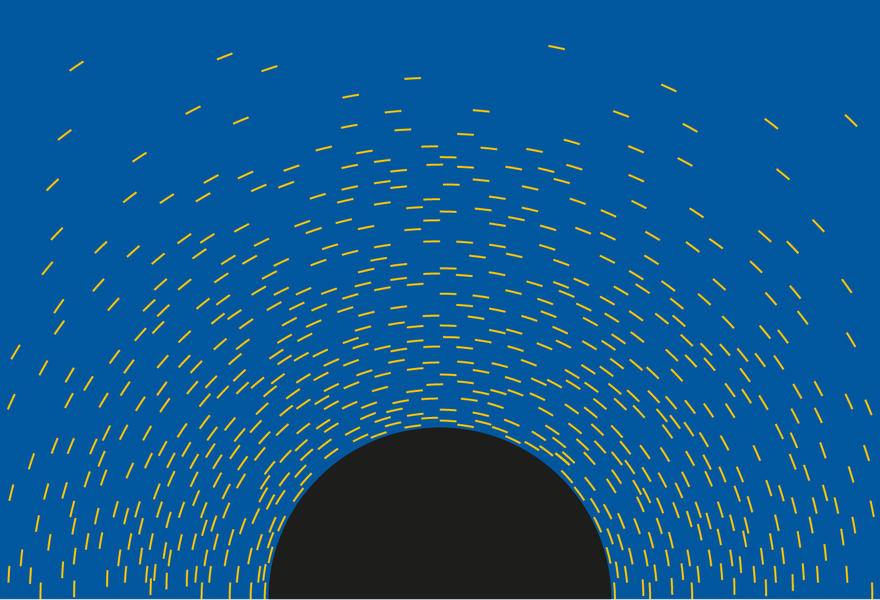
But some waves travel over large distances, where we can study them, to probe black holes and Einstein’s theory. This is called black hole spectroscopy.
The CoG members pioneered many tools and concepts in the field, and are now pushing the frontiers of spectroscopy: what happens if black holes don’t exist after all? With what precision can we study General Relativity? If time stops at the black hole horizon, what implications does it have for their sound? Can we access black hole interiors?
The next decade promises to give us a wonderful concert with black holes of all sizes. Stay tuned.
Gravitational waves across the cosmos
When two black holes merge, they produce ripples in spacetime that travel for billions of years before arriving at Earth.
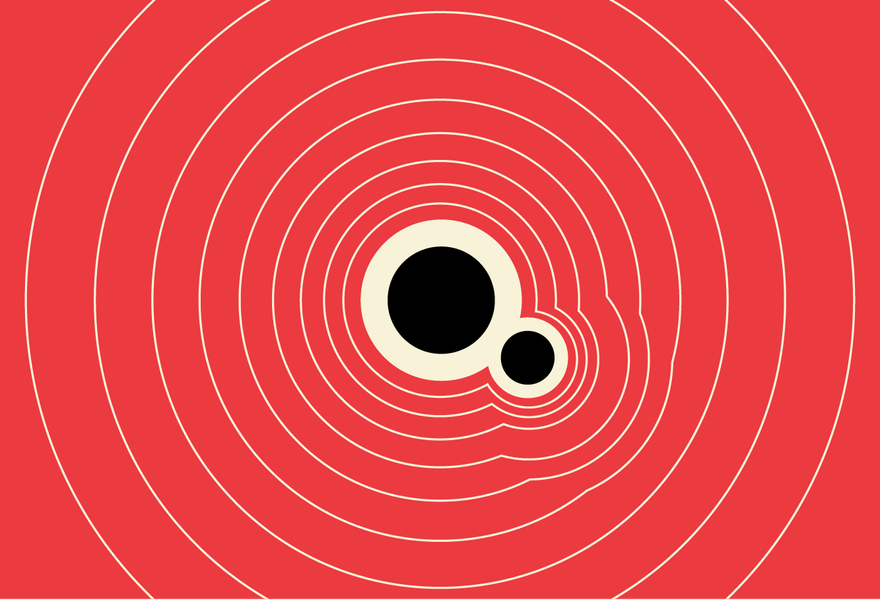
Despite the long trip, gravitational waves travel unaltered except for the stretching due to the Universe's expansion and their gravitational interaction with cosmic structures. Just as a magnifying glass bends light, any clump of matter may act as a giant lens to magnify far away gravitational waves.
Gravitational waves are thus perfect cosmic messengers to probe the elusive dark matter holding galaxies together and unveil the nature of the dark energy driving the accelerated expansion of the Universe.
At CoG, we are leading world efforts to discover gravitational wave lensing, explore the properties of the most distant black holes ever observed, and unlock the mysteries of the Universe's fundamental components.
Black holes in environments
Black holes in close orbits generate gravitational waves that travel at the speed-of-light throughout the Universe.
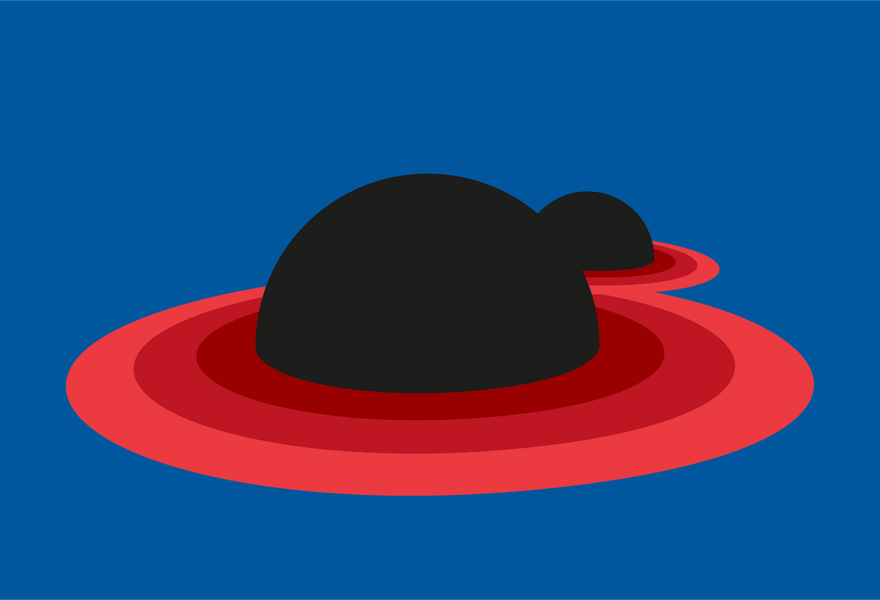
The tune and fine modulations of these waves carry imprints of the environment the orbiting black holes live in, similar to how a string that vibrates on a Guitar, a Violin, or a Japanese Shamisen will sound different.
Members of the CoG are pioneering new techniques to link these wave modulations to outstanding questions: How and where do binary black holes merge? Can one use black hole binaries to detect the presence of other black holes? Is Einstein's theory correct at all scales? Do new states of particles cluster around black holes? What is the nature of dark matter?
We are training our ears to learn from the sound of gravity.
Precision Gravitational Wave Observation
To extract science from gravitational wave observations, instrumental data is confronted with theoretical predictions known as gravitational waveforms. The more faithfully these theoretical waveforms represent reality, the more precise are the scientific inferences from the observations.
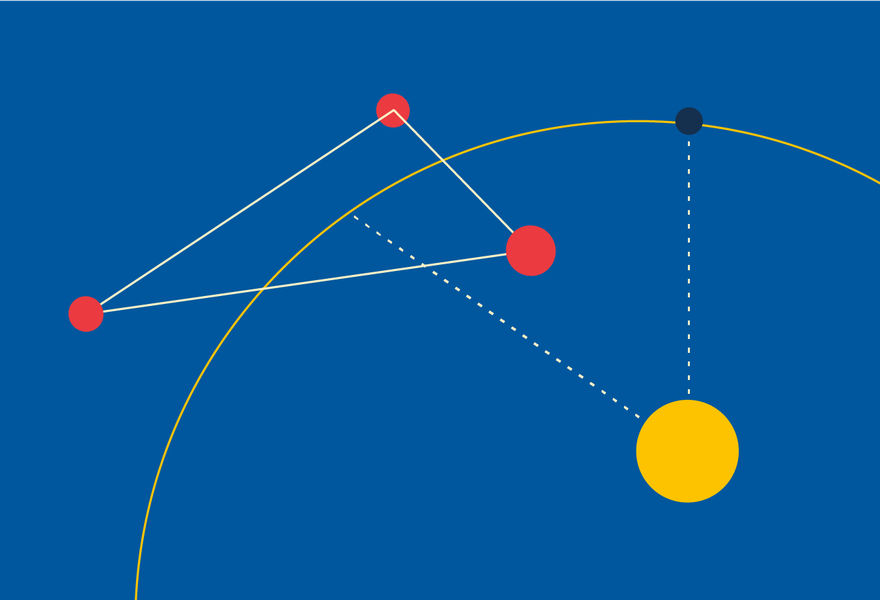
Conversely, gravitational wave observations are mostly deaf to effects not included in the waveforms. To integrate all the newest predictions from the CoG with waveform models used in on-going observations, the CoG partners with the Max Planck Institute for Gravitational Physics in Potsdam, Germany.
Together, we will develop waveforms that will allow us to distinguish new physics from the effects of astrophysical environments or gravitational lensing.
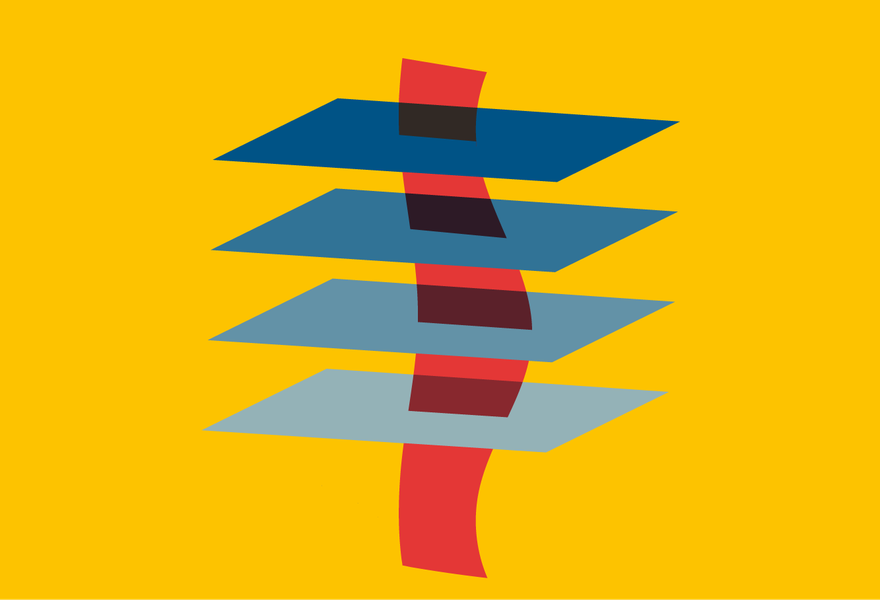 Essential Works
Essential Works
From classical works that we should all read, to lecture notes and student thesis, it’s all here:
Essential Reading
Lecture Notes
Our Graduates' Work
CoG Publications
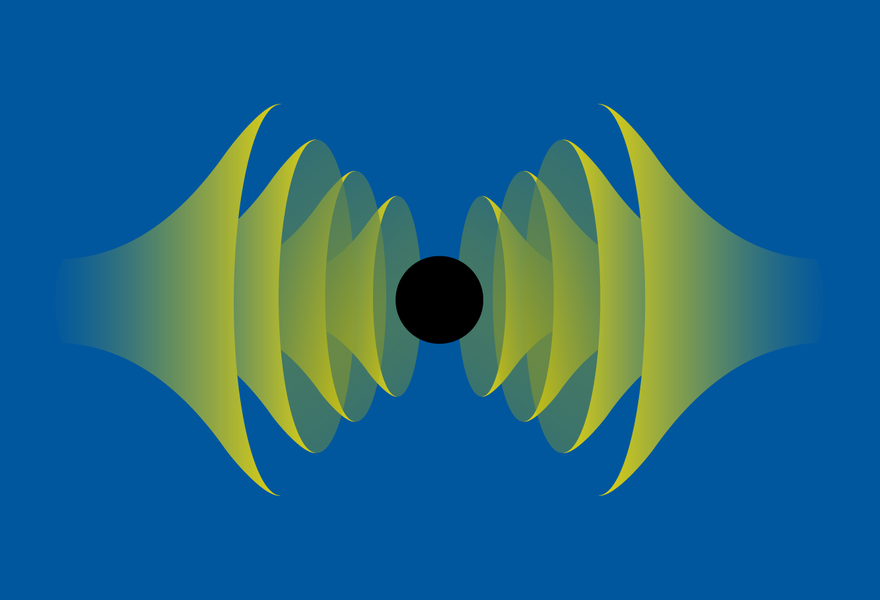 Student Information
Student Information
If you enrolled at NBI and want to follow a successful research career, read this:
Essential Skills
Required Courses (Coming soon)
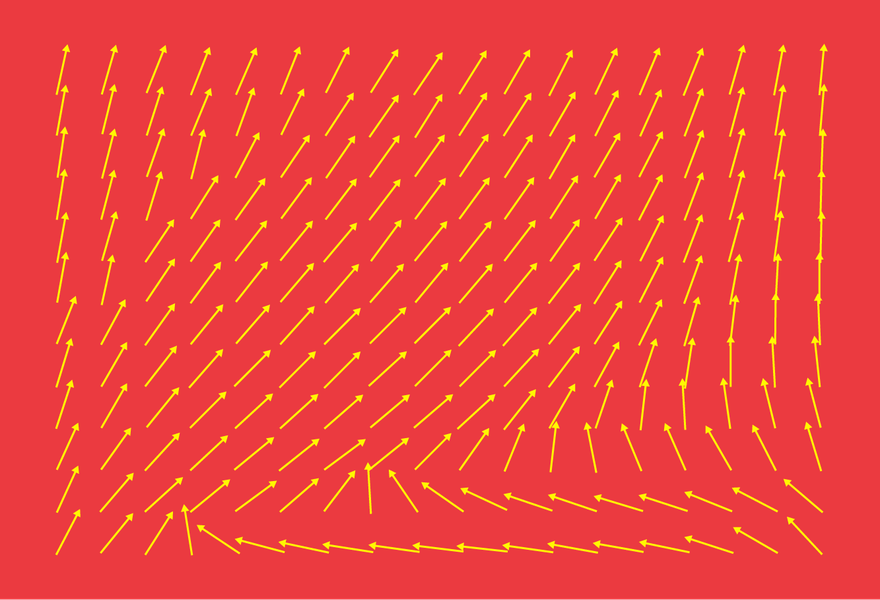 Data and Routines
Data and Routines
Here you can find the most important routines and data produced by CoG over the years, use it!
Data and Routines
Video and Audio
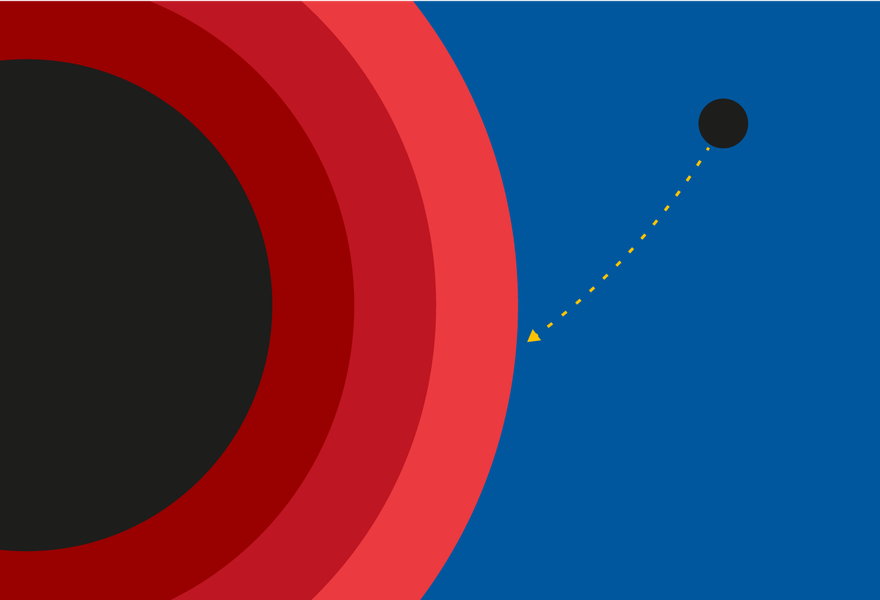 Navigating Life and Work as a CoG Member
Navigating Life and Work as a CoG Member
Below you will find tips on how to enjoy and settle in Copenhagen, information how you can begin your own group, and some useful files:
Life in Copenhagen
Funding Resources
CoG Logo Files
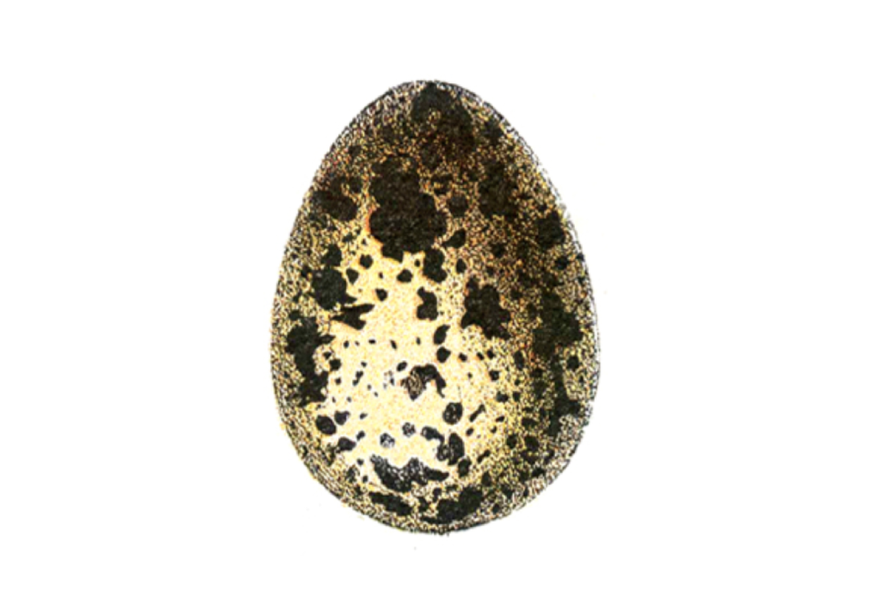 The Birth of an Idea is an ongoing project about the origin of ideas in science. Every idea has a genesis, some small event or situation that triggered its inception.
The Birth of an Idea is an ongoing project about the origin of ideas in science. Every idea has a genesis, some small event or situation that triggered its inception.
It could be a casual conversation, a walk down the street, a paper that you read… it could even be an apple falling on your head!
Our goal has been to build a catalogue of stories documenting the scientific process as it truly is: perplexing, painstaking, exciting and fun. Along the way, we also hope to tell a larger story: that of science itself, seen from the human side of the equations.
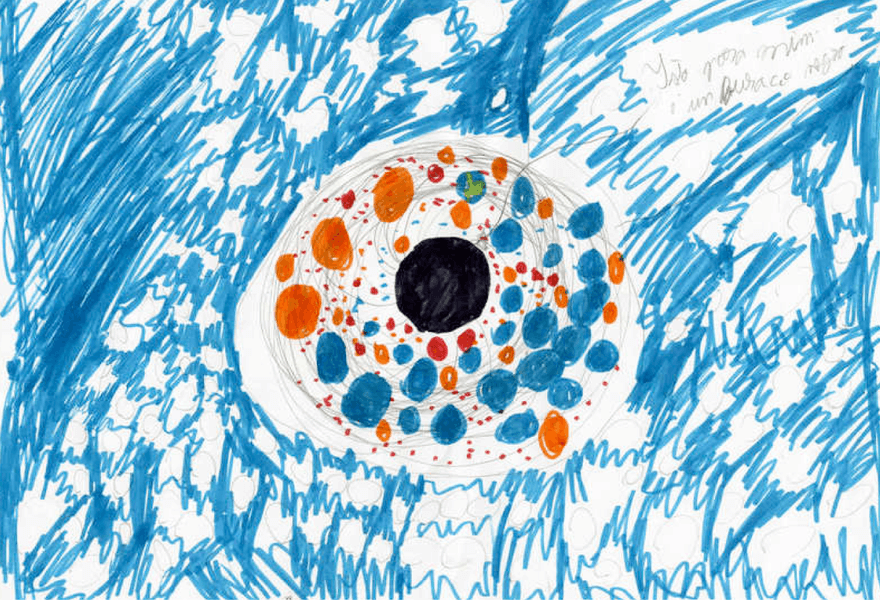 Ateliê Cósmico (Cosmic Workshop). Picasso once said that all children are artists. The curiosity and spontaneity with which they approach the world makes them naturally creative. These are also the ingredients that make a good scientist.
Ateliê Cósmico (Cosmic Workshop). Picasso once said that all children are artists. The curiosity and spontaneity with which they approach the world makes them naturally creative. These are also the ingredients that make a good scientist.
With this in mind, we wondered what would happen if we established a bridge between artistic creation and scientific reflection and looked for new perspectives on the subjects we study. What if we asked children to imagine what a black hole looks like?
This is the result, a place where elementary, middle and high school students showcase artworks inspired by astrophysics.
Gravity is stronger, the more massive it is. So join us! We have exciting bachelor and master thesis projects, and we are delighted to brave new worlds and explore topics with colleagues everywhere.
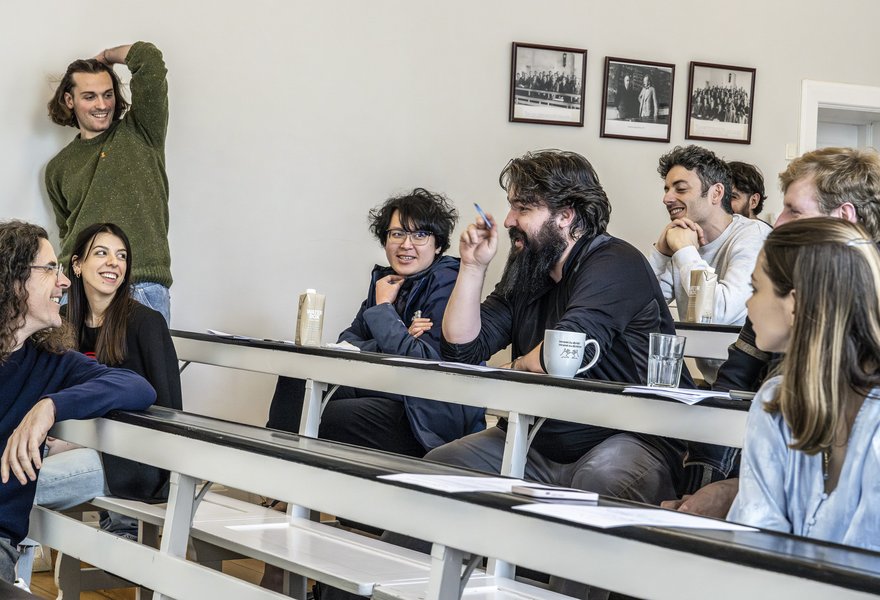
NBI students: If you are a student at the Niels Bohr Institute, and wish to do a project or thesis in gravitational physics at the CoG, the first step is to understand the themes we explore. The second and final step is to contact one of the group leaders or postdoctoral researchers and arrange a conversation and list of possible projects.
External Visitors: There is a wide range of opportunities, regarding scope and duration of the visit. The main criterion is to optimize scientific return. We support short-duration visits of days to weeks as well as long-term visits. Visits of more than two weeks are encouraged. If you wish to visit us, please fill out the form bellow. Please note that we prioritize researchers whose home institute is able to partially or totally support the visit.
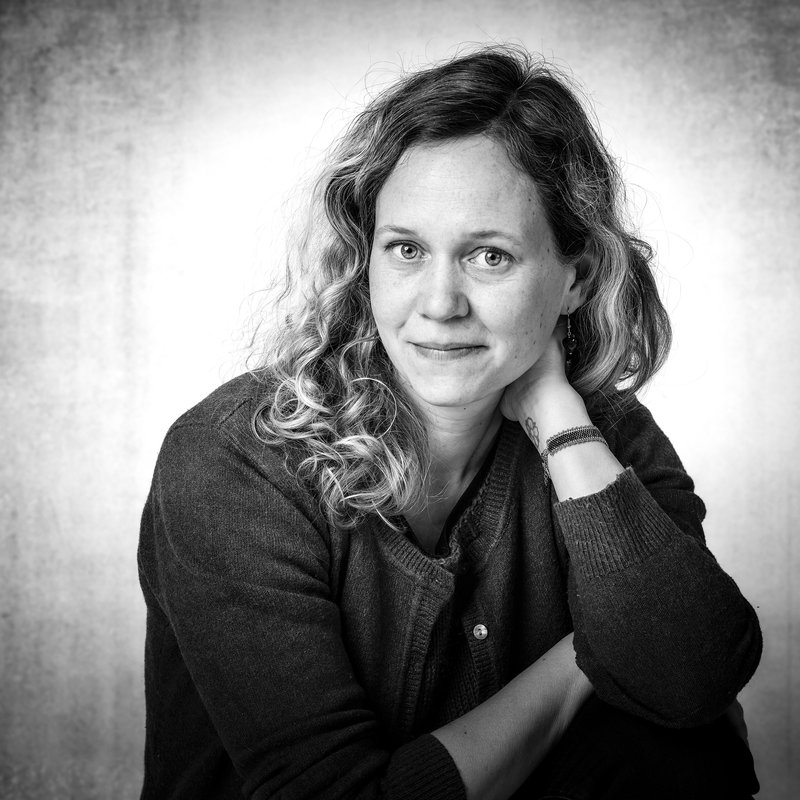 Julie de Molade, Research Coordinator
Julie de Molade, Research Coordinator
Blegdamsvej 17
2100 København Ø.
E-mail: julie.demolade@nbi.ku.dk
Telephone: +45 35 32 53 34
 Vitor Cardoso, Center Director/Professor
Vitor Cardoso, Center Director/Professor
Blegdamsvej 17
2100 København Ø.
E-mail: vitor.cardoso@nbi.ku.dk
Telephone: +45 35 33 86 20
Contact
Julie de Molade, Research Coordinator
E-mail: julie.demolade@nbi.ku.dk
Telephone: +45 35 32 53 34
Funded by:
